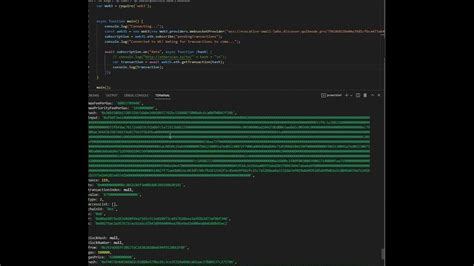Here’s an article dealing with your question:
Create a Dash App with Drawing Chart ups and Live Streaming WebSocket
As a merchant, you have to stay awake -you would be on the market in the real market. One of the effective ways to create a live control panel using a DASH, a popular Python Library to build web applications. In this article, we show you how to create a DASH application that transmits live data from Ethereum Blockchain and updates a real -time drawing chart.
Prerequisites
Before we start, make sure the following is installed:
- Dash (
PIP Install dash)
- Plotly (Pip Install Atterly
)
- Python 3.x
Set the environment
Create a new Python file (likeapp.py) and add the next environment to set up:
Python
Claim the dash
Dash import from DCC, HTML
Import Crlly.Graph_objects as Go
Importing Webrowser

Initialize a dash app
App = Dash.dash (__ Name__)
Set the chart of Plolly
Fig = Go.figure (Data = [Go.Scatter (x = [], y = [])]]
Create an act of acting
Plotly_Component = DCC.GRAPH (Id = ‘Live-WebsoCket-GRAPH’)
`
Make a trade rod
Then create a new file (for example:Traring_bot.py) containing the logic of a trade bot. In this example, we use a simple Ethereum blockchain node to retrieve live data:
Python
Import eth_utils
From the imports of the eth_position from the blocknumber
Set the Ethereum blockchain node
node_url = ‘
Eth_node = ‘http: //’ + node_url
Def Get_block_number ():
Block_number = blocknumber.from_string (‘1’)
Return block_number.to_int ()
app.layout = html.div ([[[[[[[[[
html.h1 (‘Ethereum Live Streaming Panel’),
DCC.GRAPH (Id = ‘Live-WebsoCket-GRAPH’),
dcc.livesket (URL = NODE_URL, ID = ‘Live-Websocket-Utic’, Stream = True),
]]]
Defrendation_Graph ():
Leave live data from the Ethereum blockchain node
Block_number = Get_block_number ()
Block_data = eth_utils.get_block (block_number) .Get_value ()
Update a chart with new data
Fig.data [0] .x.extnd (block_number)
Fig.data [0] .y.extend ([block_data])
Recreate the chart
App.update_GRAPH (ID = ‘Live-WebsoCket-graph’, look = fig.layout)
@app.callback (
[html.button (‘data refreshment’, id = ‘update-data-button’),
[DASH.PENDENCESS.OUTPLE (” LIVE-UTICKETAKTE-stream ‘,’ Data ‘), Dash.pendences.output (‘ Live-WebsoCket-Utica ‘,’ Figure ‘]]]]]]]]]]]]]]]]]]] ]
)
Defrendation_data_button ():
Fill in new data from the Ethereum blockchain node
Block_number = Get_block_number ()
Update a chart with new data
Picture.update_layout (x = [block_number], y = [])
Return HTML.P (‘The data is successfully refreshed!’), Sl.
If __name__ == ‘__main__’:
App.run_server (right = truth)
`
Start the app
To start the application, perform the following command:
Bash
Python app.py
`
This is powered by a Dash server and opens the browser with a supervisory board.
LIGHTERATION Data
Now, to install live current data, update the chart by clicking the "Refresh Data" button. This updates the drawing chart with new data from the Ethereum blockchain node.
To show more details, you can use DASH Directorate -builtDash_core_Componentsto create a surveillance panel with multiple interactive elements:
Python
Import Dash_core_Components as DCC
From the import of dashes with HTML
Create a supervisory board
App = Dash.dash (__ Name__)
Add their devices to the control panel
app.layout = html.div ([[[[[[[[[
html.h1 (‘Ethereum Live Streaming Panel’),
DCC.GRAPH (Id = ‘Live-WebsoCket-GRAPH’),
Dcc.livesocket (id = ‘liive-websocket-utic’, stream = true),
]]]
@app.callback (
[html.button (‘data refreshment’, id = ‘update-data-button’),
[DASH.PENDENCESS.OUTPLE (‘LIVE-WEBSOCKETA-OTHER-CHAIR’, ‘DATA’), DASH.PENDENCES.
